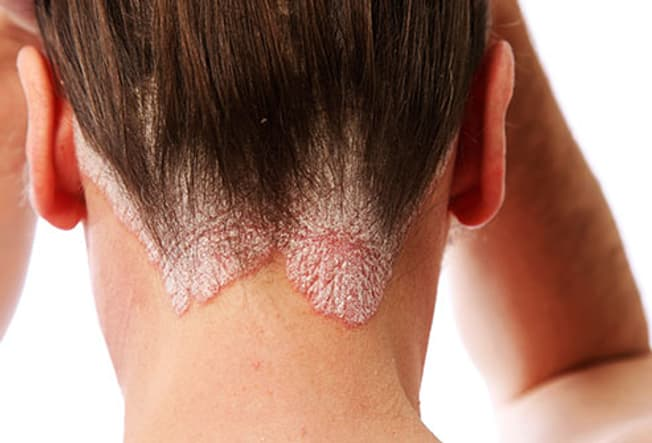Scalp psoriasis is a common skin disorder that makes raised, reddish, often scaly patches. It can pop up as a single patch or several, and can even affect your entire scalp. It can also spread to your forehead, the back of your neck, or behind and inside your ears.

1. What Is Scalp Psoriasis?
This skin disease happens when your immune system sends faulty signals and skin cells grow too quickly. These pile up in red patches, often with silvery scales. At least half the people with psoriasis have it on their scalp. But you can also get it on your forehead, behind the ears, and down the back of your neck.
2. Who Can Get Scalp Psoriasis?
You can’t catch scalp psoriasis from someone else who has it. It’s not contagious. It’s hereditary. It’s something that's passed along in your family’s genes. Most people who get psoriasis have at least one person in their family with the disease.
3. Symptoms of Scalp Psoriasis
- Red and White Patches: The most common form of the disease is plaque psoriasis. It looks like areas of thick, swollen, red patches with well-defined edges. On top of these areas are the silvery-white scales. It's easy to knock them off and cause bleeding, so be gentle with yourself when you comb your hair, shampoo, or put on and take off hats.
- Dry and Flaky Scalp: Because skin cells grow and reach the surface of your skin too fast, they tend to pile up and flake off. This can look like dandruff. But unlike that, scalp psoriasis causes a silvery sheen and dry scales. Dandruff can be waxy or greasy.
- Itchiness: This can be one of the toughest parts of having psoriasis. It can be intense and non-stop. To some people, it feels like a burning sensation. No matter how bad it gets, try not to scratch. While it may feel good at the moment, it can break open the skin and make you bleed. That can set you up for hair loss and possible infection. If you spot swollen lymph nodes, it can be a sign of an infection. Talk with your doctor so you can get treated.
- Pain: A flare-up can hurt, whether it’s because your scalp gets so dry that it cracks or you had to give in to scratching. But there are things you can do.
4. What You Can Do?
- Salicylic shampoos and other solutions can help with scales. Doctors can also prescribe high-potency steroids in the form of creams, gels, solutions, and foams. Creams can be greasy, so you may want to try the others on your scalp. It might help to put clobetasol foam, a corticosteroid, directly on damp skin. This is available in a prescription spray, too.
- Shampoo for a Dry and Flaky Scalp: Several kinds, both over-the-counter and prescription, can help. Try selenium sulfide (1%), zinc pyrithione, ketoconazole (an anti-yeast OTC medicine), or tar-based ones for thin plaques. For thicker scales, salicylic acid shampoos can work well. Not all of these work for every person. You may have to try one for a few weeks and switch to another if it doesn’t work. Use the medicated shampoo first when you’d normally lather up. It’s OK to use your regular shampoo and conditioner afterward. Know that tar-based options can be a bit smelly.
- Moisturize and Cool to Stop the Itch: The first things you might want to try are lotions, moisturizers, or even heavy ointments like petroleum jelly. Chill them in the refrigerator before you use them for an extra soothing effect. Cool water or cold packs can also give you relief.
- Cut the Itch With Apple Cider Vinegar: Some people say to use this on your scalp a few times a week. It’s long been used as a disinfectant, so it may burn a bit when you put it on. You can mix it with equal parts water to cut the sting. Some people like to use it full-strength and then rinse once it dries. But don’t try this one if you have cracks or open skin. It’ll really hurt! It may take a few weeks to notice a difference in itchiness. In general, check with your doctor before you try natural remedies.